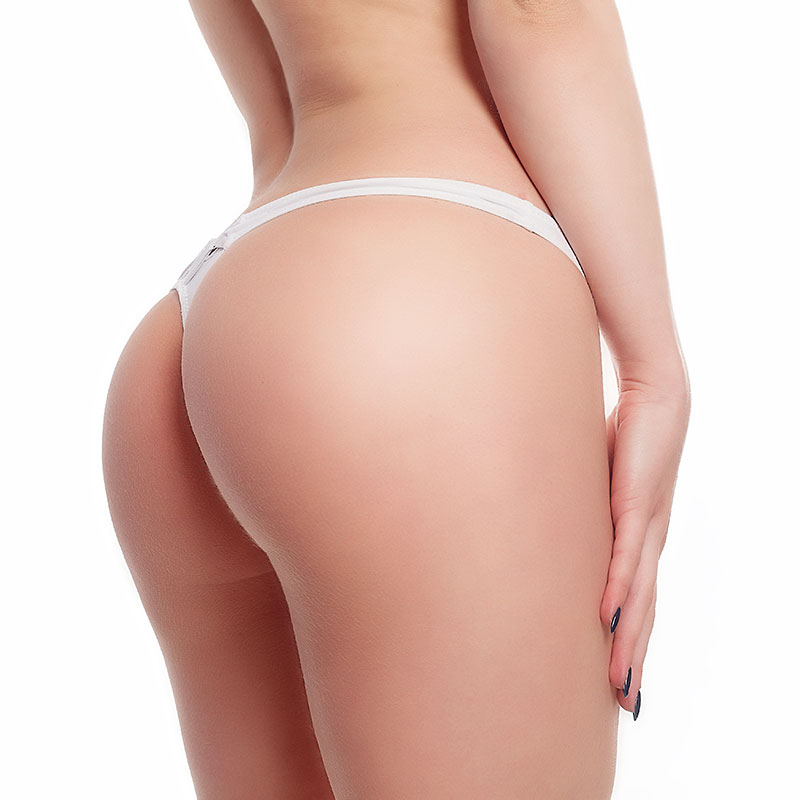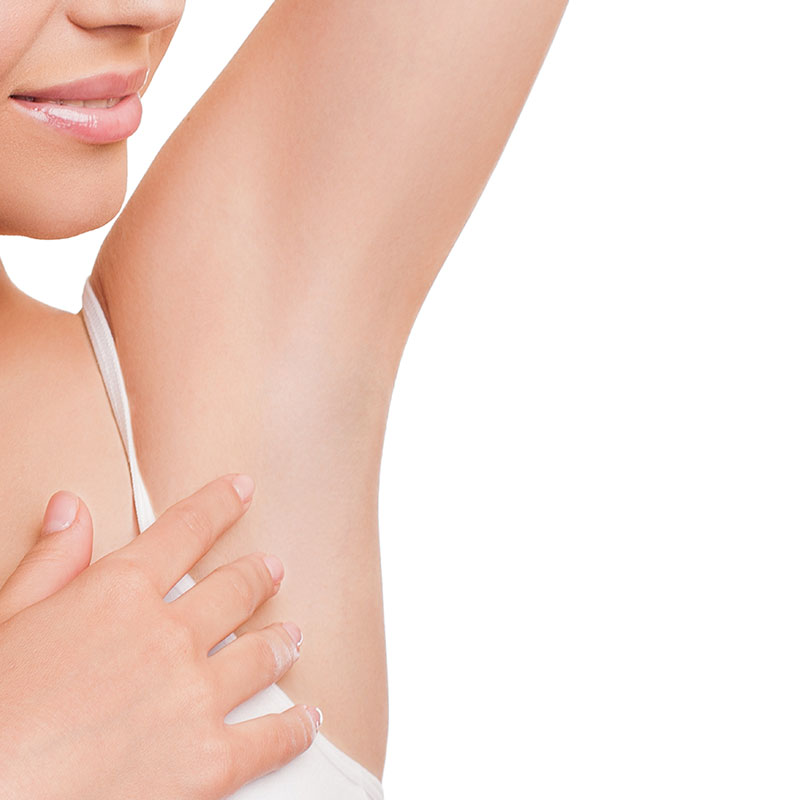Discoloration on the skin can be a source of embarrassment, especially when it comes to intimate areas or parts of your body you may feel self-conscious about. The pigment of our skin can darken for a variety of reasons, such as friction, hormones, body hair, medications, or simple genetics. The vast majority of the time, darkened skin is perfectly normal. That said, at Vibrant Rejuvenation Medi Spa in Commack, NY, we know that if you feel self-conscious about the pigment of your skin in intimate areas, you may want to consider body bleaching treatments.
What Is Body Bleaching?
Body bleaching is an aesthetic treatment that lightens the pigment of skin in one area of the body to match the surrounding skin tone. The goal of this treatment is to correct darker pigment that may not match your aesthetic goals. This treatment is increasingly popular for intimate areas of the body, particularly areas that are shaved often.
Treatments to bleach various parts of the body can be done in many ways. Sometimes, oral medications, topical creams, and body washes are used to correct pigmentation concerns. At a medispa, it’s also common to use a peel like a chemical peel or even a laser treatment to lighten the skin on the body. Depending on the area you want to treat, different treatment options can be explored.
Where Can You Use This Treatment?
Bleaching or lightening the skin can be done on virtually any area of the body. For example, it’s common to use this treatment to lighten the appearance of post-inflammatory hyperpigmentation on the face, neck, back, or chest. However, the main use for this treatment is to lighten the pigment of intimate areas of the body, including the labia, anus, nipples, and penis.
One of the most common areas of treatment is the underarm, particularly for women. The skin of the armpit frequently darkens from a combination of deodorant products, shaving, and hormones. Many women feel self-conscious about dark underarm skin, even to the point where they go to great lengths to hide their underarms from view.

Anal

Labial

Underarms

Nipples

Scrotum
How Can You Prepare for Treatment?
Like any other aesthetic treatment, you will need to make some preparations before you can lighten the skin on your body. On the day of your appointment, be sure to cleanse the desired treatment area with mild soap and warm water. Do not wear lotion, powder, perfumes, or other products on these areas of the body.
You should also make sure that your skin is healthy for your appointment, which means rescheduling if you have active acne, psoriasis, or eczema on the day of your treatment. We may give you additional preparation instructions during your consultation appointment, such as whether or not you can shave or wax any treatment areas before your appointment.
How Soon Can You See Results?
The results of this treatment will appear gradually. In general, it will take about three to four appointments before you will see any significant results. Your treatment appointments are usually spaced a few weeks apart, depending on the type of bleaching treatment you are using. For example, a peel or laser treatment may be spaced one month apart, while topical treatments can be done every few weeks or even days.
The reason the results of your treatment are gradual is that it will take time for the pigment in your skin cells to break up and disperse. Based on the treatment you are using, pigmented skin cells may need to be shed to accomplish the best bleaching effect for your skin. It’s best to give your skin adequate recovery time between treatments to avoid triggering excess pigmentation.
What Should You Avoid After Your Treatment?
You must avoid any activity or product that can trigger melanin production in the skin. This means avoiding sun tanning, tanning beds, and self-tanning products on any area of the skin where you are using a bleaching treatment. Please wear SPF on any area of the body that has been treated when you plan to be outside during the daytime. You should also be sure to keep your skin moist after treatment.
How Long Will Results Last?
Many patients want to know if this treatment produces permanent results. Scientifically, there is no way to permanently lighten the tone of your skin, particularly when the darker pigment is caused by hormonal changes or genetics. In other words, the results of your treatment will be temporary.
The even-toned results of your treatment will last for as long as melanin production in the skin is not triggered. However, you can enjoy long-lasting results by adopting a regular treatment schedule after you have achieved your desired results. We can go over your maintenance options, such as how frequently you should have treatments, after your results are achieved.
Who Are Good Candidates?
Both women and men can use body bleaching to correct the tone of the skin on various areas of the body. Bleaching treatments are generally safe and well-tolerated. You can complete a bleaching treatment in a simple, short treatment session. Good candidates include those who are not allergic to bleaching agents, those who have healthy skin, those who are not currently pregnant or breastfeeding, and those who attend a consultation.
The consultation is important to determine whether or not this treatment is appropriate for your goals. Although this treatment can be used with most complexions, it’s still important for our skin experts to verify that your skin tone and type are ideal for this treatment. During your consultation, we will also assess the health of your skin, any conditions you may have that will restrict you from treatment, and previous bleaching treatments, such as at-home kits, you have tried in the past.
Frequently Asked Questions About Intimate Body Bleaching
How Does Body Bleaching Compare to Other Skin Lightening Treatments?
Several factors come into play when comparing body bleaching to other skin-lightening options. Chemical peels provide more aggressive results but require more downtime. Laser treatments often cost significantly more and may require multiple sessions for optimal results.
Body bleaching typically offers a middle ground – providing noticeable results with minimal downtime and moderate cost. Unlike some laser treatments, body bleaching can be safely used on intimate areas and is suitable for a wider range of skin types.
What Ingredients Are Used in Body Bleaching?
Body bleaching treatments utilize specific active ingredients that work to reduce melanin production and lighten the skin tone. The most common ingredients include:
Kojic acid, derived from fungi, inhibits tyrosinase, an enzyme essential for melanin production. This natural ingredient is particularly effective for treating dark spots and creating an even skin tone.
Though controversial, hydroquinone remains one of the most effective skin-lightening agents when used under professional supervision. It works by decreasing melanin production and is often combined with other ingredients for optimal results.
Vitamin C serves as both a skin-lightening agent and an antioxidant. It helps brighten the skin while protecting it from environmental damage that could trigger additional pigmentation.
Alpha arbutin, a safer alternative to hydroquinone, provides gradual lightening effects without irritation. This ingredient is particularly suitable for those with sensitive skin.
Can Body Bleaching Treat Hyperpigmentation or Scars?
Body bleaching can effectively address various types of hyperpigmentation, including post-inflammatory marks and sun damage. While it may improve the appearance of some scars, results vary depending on the scar’s age, depth and type.
The treatment works particularly well for surface-level discoloration and recent hyperpigmentation. Deeper or older scars might require combination therapy with other treatments like microneedling or laser therapy for optimal results.
Who Should Avoid Body Bleaching?
While body bleaching is safe for many people, certain individuals should avoid or postpone treatment:
- Those with active skin infections, open wounds, or severe skin conditions should wait until their skin has healed.
- Pregnant or nursing women should also delay treatment until after their postpartum period.
- People with a history of keloid scarring or severe skin reactions should proceed with caution and may need to explore alternative treatments.
- Those using certain medications that increase skin sensitivity may also need to wait.
Are There Any Risks or Side Effects?
While body bleaching is generally safe when performed by qualified professionals, it’s essential to understand potential risks and side effects:
- Temporary skin sensitivity might occur, particularly during the first 24-48 hours after treatment. Some patients experience mild redness or tingling, which typically subsides quickly.
- If not properly monitored, certain skin-lightening agents can cause irritation or inflammation. This emphasizes the importance of seeking treatment from qualified professionals who can properly assess your skin’s reaction and adjust treatments accordingly.
- Rare but possible side effects include temporary hyperpigmentation or uneven results, which is why following post-treatment care instructions is crucial.
How Can You Maintain the Results?
Maintaining your body bleaching results requires a combination of proper skincare and lifestyle habits. A consistent maintenance routine typically includes periodic touch-up treatments every few months, depending on your individual response to treatment and the area being treated.
Using prescribed or recommended lightening products between professional treatments can help extend your results. These products often contain lower concentrations of active ingredients suitable for home use.
What Should You Look for in Aftercare Products?
Proper aftercare plays a crucial role in maintaining your results and protecting your skin. Depending on the location treated, the suggested skincare routine may include:
- A gentle, pH-balanced cleanser that won’t strip your skin’s natural barrier. Harsh soaps can irritate treated areas and potentially trigger additional pigmentation.
- A medical-grade moisturizer to maintain skin hydration and support the healing process. Look for products containing ceramides and hyaluronic acid.
- A broad-spectrum sunscreen with at least SPF 30, even for areas that don’t receive direct sun exposure. UV protection helps prevent new pigmentation from developing.
Is Body Bleaching Worth It?
Body bleaching helps create uniformity in skin tone, particularly in areas where friction, hormones or other factors have caused darkening. Many patients report increased confidence in intimate situations after treatment, especially when addressing areas like the underarms or bikini region. The psychological benefits often extend beyond appearance, as patients feel more comfortable wearing certain clothing or engaging in activities they previously avoided.
Professional body bleaching also provides a safer alternative to over-the-counter products, which may contain harmful ingredients or inappropriate concentrations of active compounds.
Transform Uneven Skin Tone With Intimate Body Bleaching
Discolored skin or darker skin pigment can make you feel self-conscious about your body. But instead of worrying about darker skin pigment in intimate areas, you can use a simple non-invasive aesthetic treatment to make the pigment on your skin uniform. Our gentle treatments deliver gradual, natural-looking results with minimal downtime.
For more information about body bleaching, please contact Vibrant Rejuvenation Medi Spa in Commack, NY today.

